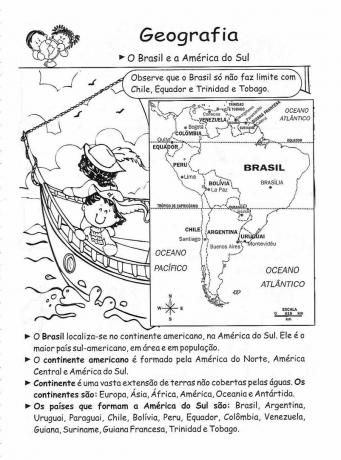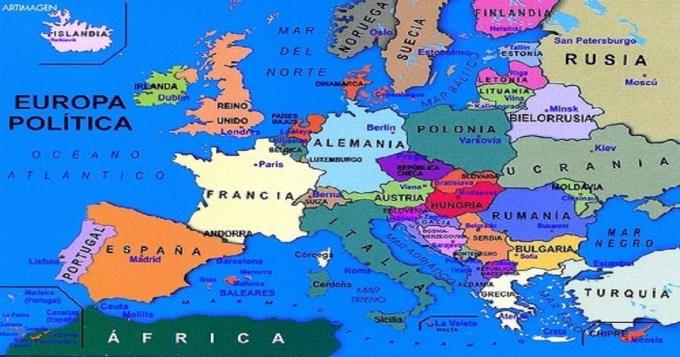We have prepared a list with several suggestions for 3 year Geography Activities of Elementary School ready to print and apply in the classroom or as a homework assignment.
Subjects that can be worked on in the second year of elementary school:
the municipality
geographical orientation
Industry, commerce and services
Water in the municipality
Ambiental degradation
Among others..
Index
The objective of this Geography evaluation is to verify if the student has awakened his eyes to the transformations in the environment, in accordance with the concepts worked on in the first two months.
The student should be able to recognize the ways in which man intervenes in nature, as well as the ways in which natural phenomena interfere in the landscape.
See also: Map of Brazil to color.
To work with your third year students of elementary School, we have gathered several suggestions with educational activities, check out:
Brazil and South America: Please note that Brazil only does not border Chile, Ecuador and Trinidad and Tobago

Earth: The world we live in – It is part of our solar system.

Replace the drawings with words and rewrite the sentences. Then paint the map.

The Relief:
The Earth's surface is not the same throughout its entirety. Some places are flatter and others more rugged also have high regions and low regions.

Work in Industry.

Public services: Municipalities pay fees for:

The Earth: is a round-shaped plant, slightly flattened at the poles. There are two poles: the North Pole and the South Pole.

The means of transport allow people to move from one place to another. They can be land, air and sea.




____

It is Geography Activity 3 year educational aims to allow the student to perceive and identify different types of maps.
In order for your students to understand what you want to represent on each map, and to what extent they can distort or hide real data.
The teacher should first present the modern political map, drawing students' attention to the following points:
___
The purpose of this 3 year geography activity it is to allow the student to know and identify the different types of means of transport, from the oldest to the most modern.
This activity will also allow the student to get to know school realities from other cultures. The subject of History can also be worked on.
Film: Children of Heaven, by Majid Majidi, Iran, 1997
This film tells the story of a boy who loses his sister's only shoes, and is forced to share his only pair with her so that they can go to school properly. Many curious situations are generated from this situation, as the boy studies in the morning and his sister in the afternoon. So he has to run every day between school and his house to deliver the shoes to his sister on time. In this case, the means of transport used are the shoes themselves. This film will allow the student to realize that, although the route to school is the same every day, many things can change from one day to another along this route. It will better develop your perception of space and time, geography and history.
Film screening for students
After the movie, ask students to provide critiques and comments about the movie they watched. Encourage observations.
After listening to the students' general comments about the film, the teacher will be able to instigate the following reflections:
The teacher can encourage their students to create a comic book about a day on the way home to school. It can be a true story or an imaginary one.
The teacher should encourage the comparison between the stories produced by students who do the same route to school, noting differences and similarities of looking at the same neighborhood or environment.
___
The purpose of this 3 year geography activities it is to allow the student to perceive and identify the relationship between man and the environment based on music.
Based on these observations, the teacher should present excerpts from the music related to the environments previously presented.
Examples:
___
1) For coexistence in society, it is important to have norms and common feelings among people, such as:
| RESPECT | KINDNESS |
| FRIENDSHIP | COMPANIONSHIP |
2) Make a sentence with each word above.
___
3) Draw a natural landscape, without transformations caused by nature or by man (asphalt, buildings, poles).
Are we going to transform this landscape?
4) Now draw the same landscape and complete it with man-made (cultural) elements.
3) Draw or paste a landscape that has been modified by natural factors. It could be some report of flooding caused by rain, for example.
Subscribe to our email list and receive interesting information and updates in your email inbox
Thanks for signing up.